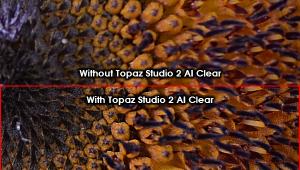Exploring Fujifilm’s ACROS Film Simulation Mode

The monochrome mode on most digital cameras is a convenience that is best avoided. Conventional wisdom says that it’s far, far better to shoot Raw and convert to monochrome—or at least to start with a color JPEG. But Fujifilm suggests that their ACROS film simulation mode might even top the best Raw converters. Does it?
Fujifilm’s two 24-megapixel cameras, the X-Pro2 and X-T2, offer a film simulation mode that accurately emulates their remarkable black and white Neopan ACROS film. On the Fujifilm X website they suggest that unlike the drab monochrome mode most camera makers offer mainly because they can, the ACROS mode outperforms other methods of creating black and white images.
Thanks to the high resolution sensor and the powerful X-Processor Pro engine, Fujifilm is able to match the film grain and rich tonal range of ACROS. Moreover, the grain is sized according to the ISO, just like in the real film world—and that’s a remarkable feature that’s hard to beat.
So from an in-camera standpoint, the end results should be better than what other cameras are capable of producing. But what about post processing? There are some software experts out there who can practically make pixels do the cancan.
Fujifilm says the ACROS mode trumps most Raw converters.
The website reads, in part: “We also think that it is very unlikely that any RAW conversion software would achieve what ‘ACROS’ achieves. We all know that there are excellent RAW conversion software in the market, but we also believe that the magic of X-Processor Pro is not so easily solved.”
I’ve been using my Fujifilm X-Pro2 since early August. The convenient Film Simulation Bracketing feature makes it easy to simultaneously capture an image with the ACROS setting along with color film types, and I do it often.
In addition to pure ACROS you can modify the effect by selecting red, yellow or green filter emulation. Unlike some cameras, where the built-in software filters do little, on my X-Pro2 the filter effect is dramatic and consistent with reality. The red filter darkens a blue sky, etc.
To make a fair comparison, I shot several series of images in the Provia and ACROS simulation modes. Then I processed the “straight color” (Provia) images in Alien Skin X2 and NIK Silver Efex Pro 2, using the default settings that yielded the closet comparison. With Alien Skin X2 it was easy—they offer a Fuji Neopan ACROS preset. For Silver Efex I used their Fine Art Process preset. Separately I shot some Raw images and processed them in ACR.
You can see some of the images below. To my eyes, after carefully studying the results, the ACROS film simulation does all they say and more. Rich blacks, clean whites, incredible tonal range and very film-like images—exactly what Fujifilm promised.
—Jon Sienkiewicz























































